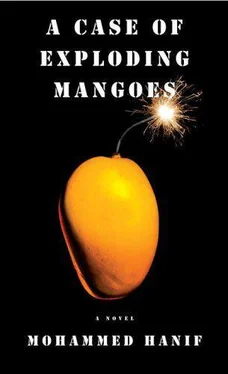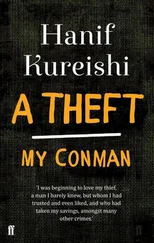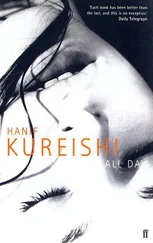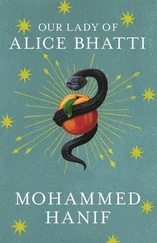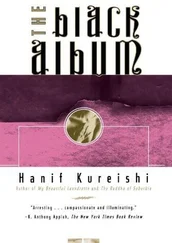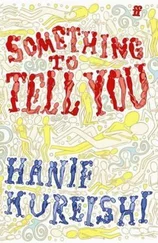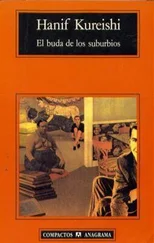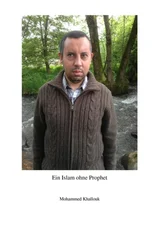Mohammed Hanif
A Case of Exploding Mangoes
Mohammed Hanif. A Case of Exploding Mangoes,2008
A first novel of the first order — provocative, exuberant, wickedly clever — that reimagines the conspiracies and coincidences leading to the mysterious 1988 plane crash that killed Pakistan’s dictator General Zia ul-Haq.
At the center is Ali Shigri: Pakistan Air Force pilot and Silent Drill Commander of Fury Squadron. His father, one of Zia’s colonels, committed suicide under suspicious circumstances. Ali is determined to understand what or who pushed his father to such desperation — and to avenge his death.
What he quickly discovers is a snarl of events: Americans in Pakistan, Soviets in Afghanistan, dollars in every hand. But Ali remains patient, determined, a touch world-weary (‘You want freedom and they give you chicken korma’), and unsurprised at finding Zia at every turn. He mounts an elaborate plot for revenge with an ever-changing crew (willing and not) that includes his silk-underwear-and-cologne-wearing roommate; a hash-smoking American lieutenant with questionable motives; the chief of Pakistan’s secret police, who mistakenly believes he’s in cahoots with the CIA; a blind woman imprisoned for fornication; Uncle Starchy, the squadron’s laundryman; and, not least of all, a mango-besotted crow. General Zia — devout Muslim and leering admirer of non-Muslim cleavage — begins every day by asking his chief of security: ‘Who’s trying to kill me?’ and the answer lies in a conspiracy trying its damnedest to happen…Intrigue and subterfuge combine with misstep and luck in this darkly comic book about love, betrayal, tyranny, family — and a world that unexpectedly resembles our own.
You might have seen me on TV after the crash. The clip is short and everything in it is sun-bleached and slightly faded. It was pulled after the first two bulletins because it seemed to be having an adverse impact on the morale of the country’s armed forces. You can’t see it in the clip but we are walking towards Pak One, which is parked behind the cameraman’s back, in the middle of the runway. The aeroplane is still connected to an auxiliary fuel pump, and surrounded by a group of alert commandos in camouflaged uniforms. With its dull grey fuselage barely off the ground, the plane looks like a beached whale contemplating how to drag itself back to the sea, its snout drooping with the enormity of the task ahead.
The runway is in the middle of Bahawalpur Desert, six hundred miles away from the Arabian Sea. There is nothing between the sun’s white fury and the endless expanse of shimmering sand except a dozen men in khaki uniforms walking towards the plane.
For a brief moment you can see General Zia’s face in the clip, the last recorded memory of a much photographed man. The middle parting in his hair glints under the sun, his unnaturally white teeth flash, his moustache does its customary little dance for the camera, but as the camera pulls out you can tell that he is not smiling. If you watch closely you can probably tell that he is in some discomfort. He is walking the walk of a constipated man.
The man walking on his right is the US Ambassador to Pakistan, Arnold Raphel, whose shiny bald head and carefully groomed moustache give him the air of a respectable homosexual businessman from small-town America. He can be seen flicking an invisible speck of sand from the lapel of his navy-blue blazer. His smart casual look hides a superior diplomatic mind; he is a composer of sharp, incisive memos and has the ability to remain polite in the most hostile exchanges. On General Zia’s left, his former spymaster and the head of Inter Services Intelligence General Akhtar seems weighed down by half a dozen medals on his chest and drags his feet as if he is the only man in the group who knows that they shouldn’t be boarding this plane. His lips are pinched and, even when the sun has boiled everything into submission and drained all colour out of the surroundings, you can see that his normally pale skin has turned a wet yellow. His obituary’ in the next day’s newspapers would describe him as the Silent Soldier and one of the ten men standing between the Free World and the Red Army.
As they approach the red carpet that leads to the Pak One stairway you can see me step forward. You can tell immediately that I am the only one in the frame smiling, but when I salute and start walking towards the aeroplane, my smile vanishes. I know I am saluting a bunch of dead men. But if you are in uniform, you salute. That’s all there is to it.
Later, forensic experts from Lockheed will put the pieces of crashed plane together and simulate scenarios, trying to unlock the mystery of how a superfit Ci3O came tumbling down from the skies only four minutes after take-off. Astrologists will pull out files with their predictions for August 1988, and blame Jupiter for the crash that killed Pakistan’s top army brass as well as the US Ambassador. Leftist intellectuals will toast the end of a cruel dictatorship and evoke historic dialectics in such matters.
But this afternoon, history is taking a long siesta, as it usually does between the end of one war and the beginning of another. More than a hundred thousand Soviet soldiers are preparing to retreat from Afghanistan after being reduced to eating toast smeared with military-issue boot polish, and these men we see in the TV clip are the undisputed victors. They are preparing for peace and, being the cautious men they are, they have come to Bahawalpur to shop for tanks while waiting for the end of the cold war. They have done their day’s work and are taking the plane back home. With their stomachs full, they are running out of small talk; there is the impatience of polite people who do not want to offend each other. It’s only later that people would say, Look at that dip, look at their tired, reluctant walk, anybody can tell that they were being shepherded to that plane by the invisible hand of death .
The generals’ families will get full compensation and receive flag-draped coffins with strict instructions not to open them. The pilots’ families will be picked up and thrown into cells with blood-splattered ceilings for a few days and then let go. The US Ambassador’s body will be taken back to Arlington Cemetery and his tombstone would be adorned with a half-elegant cliche. There will be no autopsies, the leads will run dry, investigations will be blocked, there will be cover-ups to cover cover-ups. Third World dictators are always blowing up in strange circumstances but if the brightest star in the US diplomatic service (and that’s what was said about Arnold Raphel at the funeral service in Arlington Cemetery) goes down with eight Pakistani generals, somebody would be expected to kick ass. Vanity Fair will commission an investigative piece, the New York Times will write two editorials, sons of the deceased will file petitions to the court and then settle for lucrative cabinet posts. It would be said that this was the biggest cover-up in aviation history since the last biggest cover-up.
The only witness to that televised walk, the only one to have walked that walk, would be completely ignored.
Because if you missed that clip, you probably missed me. Like history itself. I was the one who got away.
What they found in the wreckage of the plane were not bodies, not serene-faced martyrs, as the army claimed, not the slightly damaged, disfigured men not photogenic enough to be shown to the TV cameras or to their families. Remains . They found remains . Bits of flesh splattered on the broken aeroplane parts, charred bones sticking to mangled metal, severed limbs and faces melted into blobs of pink meat. Nobody can ever say that the coffin that was buried in Arlington Cemetery didn’t carry bits of General Zia’s remains and what lies buried in Shah Faisal mosque in Islamabad are not some of the remains of the State Department’s brightest star. The only thing that can be said with certainty is that my remains weren’t in either of those coffins.
Читать дальше
